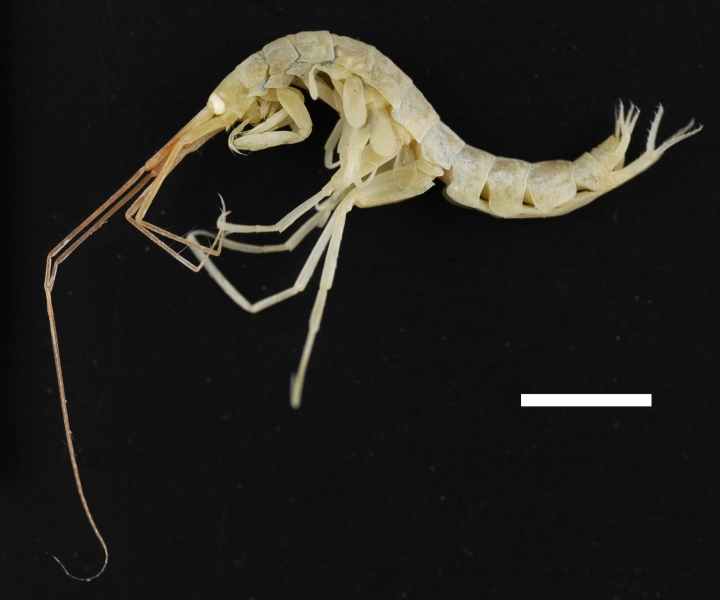Who doesn’t want to have a species named after them?
It’s usually one of the ultimate acknowledgements and the taxonomist describing the species can honour colleagues who have made a particular contribution to a field of science or have provided support for their work. And sometimes we just like to acknowledge friends and family so it’s not just scientists a species can be named after.
We have been inspired to start a Critter of the Week series where we examine who a species has been named after and why.
Camacho nodderi
In 2010, our colleague Scott Nodder, a geologist here at NIWA Wellington was honoured with the description of an amphipod species, Camacho nodderi, which was collected during a voyage that he led to the Chatham Rise.
During the second expedition of the “Oceans Survey 20/20 Chatham-Challenger Hydrographic, Biodiversity and Seabed Habitat project” in April 2007 the research vessel Tangaroa surveyed the Chatham Rise east of New Zealand. Several unusual and large amphipods were found and subsequently classified by the authors Oliver Coleman (Museum für Naturkunde, Berlin) and Anne-Nina Lörz (NIWA) as a new species of the genus Camacho from the family Aoridae. Stebbing (1888) described a closely related species from New Zealand waters, collected during the Challenger Expedition in the late 1870s, but the species we found was sufficiently different to describe it as a new species. Then, the species was only known from a handful of sites from the Chatham Rise and between 414-657 m. To this day, this species has only been collected again from a slightly shallower 200 m off Kaikoura on the South Island.
Scott Nodder
Dr Scott Nodder is a marine geologist at NIWA and he is particularly interested in the interactions between the oceanic water and the sediment, called benthic-pelagic coupling but he is also a leading researcher in studies of carbon cycling in marine food webs.
Below are some links that highlight some of the work Dr Scott Nodder is involved in here at NIWA:
- Remote sensin of phytoplankton biomass and productivity project
- Effects of ocean acidification on plankton in New Zealand waters project
- Marine food webs project
What is in a name? Etymology
Each time a new taxonomic name (species, genus or any other) is proposed, it should be accompanied by a section called ‘Etymology’ which will explain why that name is chosen. For example, last week we mentioned that the name ‘Crinoidea’ (sea lillies and feather stars) is based on the Greek words ‘krinon’ for lilly and ‘eidos’ for form so the name would be descriptive and traditionally we still use the classical languages like Latin and Greek for this purpose.
Alternatively, if a species name is based on a location, usually the ending ‘-ensis’ is appended, hence species names such as Doris wellingtonensis (see CotW 12). And if a species name is dedicated to a person, then this will be based on the gender of the person, with a species name ending in ‘-ae’ being dedicated to a female person (e.g. Campylaspis millsae is a comma shrimp named after our own Sadie Mills, see CotW 53), and ‘-i’ being named after a male, like C. nodderi.
In the case of our Critter of the Week, the following explanation was provided by the authors:
This species is named for Dr. Scott Nodder, one of the organisers of the Oceans 20/20 program and the leader of the Tangaroa expeditions to the Chatham Rise and Challenger Plateau during which the new species was sampled.
The rules for taxonomic naming are governed by the International Code of Zoological Nomenclature (ICZN) for all animals, the International Code of Nomenclature for algae, fungi, and plants (ICN), or the International Code of Nomenclature of Bacteria (ICNB) which all provide vocabularies and specialized terminologies that are used in those fields.
- Code of Zoological Nomenclature
- International Code of Nomenclature
- International Code of Nomenclature of Bacteria

